#rose eveleth
Text
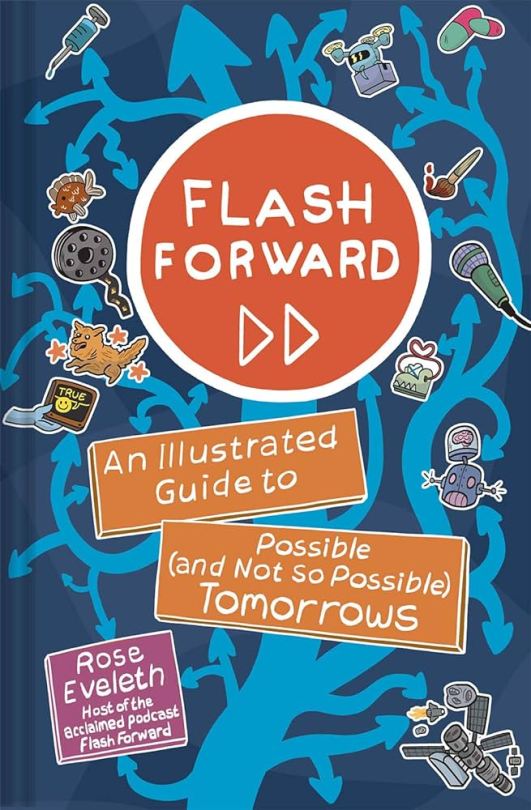
#short story collection#short story collections#flash foward: an illustrated guide to possible (and not so possible tomorrows)#rose eveleth#21st century literature#english language literature#american literature#have you read this short fiction?#book polls#completed polls
4 notes
·
View notes
Text
Berly and LA recap the season five Supernatural episode, Swap Meat. Over drinks, they'll discuss lore, gore, and what they adore about the Winchesters and their adventures. Now, let's get tipsy! CW/TW for violent and lewd commentary; listeners beware! 🔞
youtube
3 notes
·
View notes
Text
[tagged by @sidewalk-scrawls ]
fav color: Yellow
song stuck in my head: Molina - Hey Kids
last song listened to: Metro Boomin - Am I Dreaming
last google: “how to get my kid a library card in Albuquerque“ (The kid is actually my sisters kid, but I couldn't find the answers I needed until I phrased it this way. As it turns out we’d need my sisters signature and ID, which is BALLS! because my sister will NEVER go down to the library and do the things, uuuughhh. I as the kiddo’s tia should be able to get the library card damn it!)
(I’m adding my own questions. Anarchy! )
Whatca up to today?: Renewing my library card, and unfortunately NOT getting the kiddo a library card.
Whatca been up to lately?: I’m in competition with the kiddo. We’re trying to see who can read the most books this year, and I am by FAR winning! But I mustn't grow complacent, I need more books, MOOORREE BOOOKSS. We’ve settled on audio books and graphic novels counting for half points, and that is pretty much what I read, but still, the kid has read read like 3 book books and I've finished 17 audiobooks and 13 graphic novels so far! (plus 5 I started and intend to finish eventually.)
Would you say that you’re a competitive person?:YES. Yes I am.
Best book so far this year?: Hard question, very hard question, especially because I am hard to please. I guess it’s a tie between A House with Good Bones by T Kingfisher, because the writing was fun and funny, and The Last House on Needless Street by Catriona Ward, because religious lesbian cat pov. (honorable mention for the graphic novel Something Is Killing the Children.)
Worst book you’ve finished so far this year?: Recursion by Blake Crouch. It had such a promising premise, but my GOD it was boring as hell. So disappointing. Second place goes to Universal Harvester by John Darnielle. Pretty writing, went nowhere so sooo slowly, and boringly.
Most recent book?: The last book I finished was The Push by Ashley Audrain, I just started Clown in a Cornfield by Adam Cesare and I’ve been reading the half comic half book of essays book Flash Forward: An Illustrated Guide to Possible (and Not So Possible) Tomorrows by Rose Eveleth.
Want some book recs?: YEESS, yes I need book recs. Horror book recs especially. Anyone that reads this post should rec me books. I’m on a horror kick this year, but I also like sci-fi and fantasy. I mostly hate romance, but I have a soft spot for The Night Circus Erin Morgenstern. Murderbot Dairies by Martha Wells is my all time fave. Honorable mentions include The Carls Series by Hank Green and The His Dark Materials trilogy by by Philip Pullman. Feed my need people, rec me BOOOKKSS.
(Ok, anarchy over.)
dream trip: Japan, cause i’m a bit of a weeb. I want tasty food, and pretty pictures, and cute souvenirs. I wanna see the train cats, and the mascots that get stuck in elevators, and I wanna take pictures of nature, and I wanna go to the pokemon store, and I want to eat big fluffy pancakes, and ramen and rice balls and everything else that looks good.
anything i want right now: Book recs and rice balls.
(Not tagging anyone, but if you wanna do it, go for it!)
3 notes
·
View notes
Photo

(via GIPHY)
#giphy#science#rose#education#mosquito#entomology#ted-ed#teded#tededucation#mosquitos#ted ed#ted education#karrot#karrot animation#mosquito bites#rose eveleth#eveleth
10 notes
·
View notes
Text
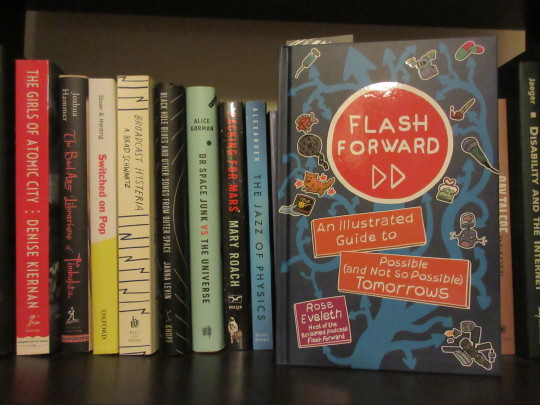
April 24, 2021 - Day 309
I forgot that it was independent bookstore day when I went to go pick up this book, so that worked out well.
3 notes
·
View notes
Link
2 notes
·
View notes
Audio
Here’s another panel recording from my summer book tour! This one took place at 826 Valencia’s Pirate Supply Store in San Francisco, and features some powerful conversations about vulnerability in the current media climate, mentorship and self-doubt, and the commodification of personal narratives.
Thanks to Rose Eveleth (@flashforwardpod), Molly MacLeod (@mollyampersand), and Bobbie Johnson for their insight and honesty. This was a great conversation.
#audio#podcast#imposter syndrome#anxiety#creative life#conversation#panel#826 valencia#education#self-doubt#self care#lucy bellwood#bobbie johnson#rose eveleth#molly macleod#flash forward podcast
5 notes
·
View notes
Link
When you’re in elementary school, having friends from a different grade can be an indicator of your social status. Hanging around with kids in the grade below yours might be seen as a negative, but if you manage to...
#Old age#Rose Eveleth#Disability#Philosophy of love#Intergenerationality#Jessica Stillman#Social constructionism#Friendship#Demographics#Articles#Implicit stereotype#Lifehacker#news#currentindia#current india#india news#latest news#world news online
0 notes
Photo

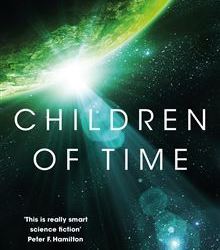




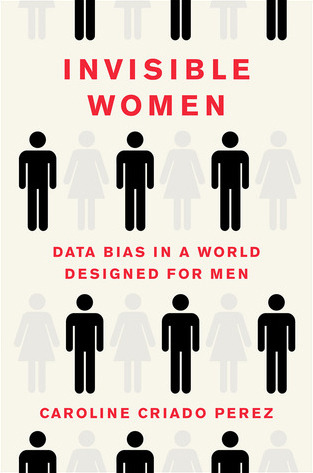


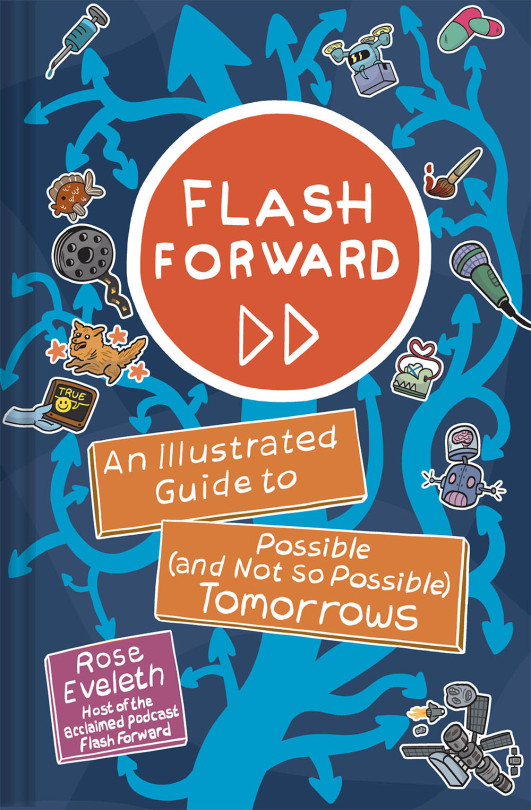
July Monthly Recap
I forgot to do my July monthly recap, whoops! Honestly, the last couple of months have really blended into each other. I have had an excellent couple of months, though - I read 12 books in July, and my favorites were Hench and Invisible Women.
Monstress, Vol. 4: The Chosen by Marjorie M. Liu and Sana Takeda: 4.5/5
Flash Forward by Rose Eveleth: 4.5/5
The Queen of Sorrow by Sarah Beth Durst: 3.5/5
Children of Time by Adrian Tchaikovsky: 4.5/5
Invisible Women by Caroline Criado Perez: 5/5
Jade City by Fonda Lee: 3.75/5
No Good Duke Goes Unpunished by Sarah MacLean: 4.25/5
Hench by Natalie Zina Walschots: 5/5
Sisters of the Vast Black by Lina Rather: 5/5
Jingo by Terry Pratchett: 4.75/5
Recipe for Persuasion by Sonali Dev: 4.25/5
Sun-Daughters, Sea-Daughters by Aimee Ogden: 4/5
16 notes
·
View notes
Text
Mummy Brown: A Most Tragic Hue That Everyone Used
Millions of people walk the hallowed halls of the Louvre every year to see some of the most important masterpieces of all time with their own eyes. With 35,000 pieces on display there is a lot to take in, and among them is Interior of a Kitchen by Martin Drölling. The scene is tranquil, showing an illuminated country kitchen where a young girl works on her needlework, another woman sits in her chair, and a girl sits on the floor playing with a cat. The detail is exquisite, and although the view from the window is bright the majority of the scene is painted in varying shades of brown, and it is this brown hue that places Interior of a Kitchen in a unique category. Drölling painted the work in 1815, but his paint had origins in ancient times.

Interior of a Kitchen by Martin Drölling. Image via Wikipedia.
In the Medieval age medicine was still in its infancy, but one substance that was highly sought after for its medicinal purposes was bitumen. Referred to as early as the twelfth century, it was a substance believed to cure nearly any ailment. Bitumen was found naturally in the earth in the Middle East region, but rather than extracting it from the ground, it was believed that it could be obtained from another source, the long-dead bodies of ancient Egyptians. The Persian word for bitumen was “mum” or “mumiya” which lent itself to the word “mummy” and the black color of the wrapped corpses led people to (falsely) believe they were soaked in bitumen during the embalming process. It was impossible to extract the alleged bitumen from the mummies, so they ground up the dead ancient bodies and used that instead.
By the fifteenth century it was commonplace for merchants to visit Egypt and send large shipments of mummies back to Europe for an eager consumer looking to grind them up for medicine. At the time there were incalculable numbers of mummies at their disposal and according to Thomas Pettigrew’s History of the Egyptian Mummy the author writes, “No sooner was it credited that mummy constituted an article of value in the practice of medicine than many speculators embarked in the trade; the tombs were sacked, and as many mummies as could be obtained were broken into pieces for the purpose of sale.” After being lowered into the tombs merchants picked their new cargo and paid the inexpensive prices before loading their ships with bodies and parts that were doomed for the grinders of Europe. Once reduced to powder, the dead would be mixed into topical balms or straight into drinks to be immediately ingested. The demand for mummy medicine ran high with little to no consideration if the body was old, young, male, female, or cause of death. It was a trend that continued well into the 18th century.

Merchant selling mummies on the street. Image via rarehistoricalphotos.com.
By the 1830s the general public became obsessed with all things ancient Egypt and relics from the time became highly desired collectible pieces with a mummy being at the top of everyone’s wish list. The ferocity in obtaining mummies sent people tearing into sacred sites and haggling with sellers on the streets who claimed the bodies they were selling were genuine. The monk Father Géramb stated in 1833 that “it would be hardly respectable, on one’s return from Egypt, to present oneself without a mummy in one hand and a crocodile in the other.” Once brought into the homes of Europe as unfortunate souvenirs the fascination with Egypt’s ancient dead manifested in mummy “unwrappings” or “unrollings” that began as scientific undertakings but evolved into public events that would often sell out. As the wrappings were unfurled those gathered would delight in the trinkets that would fall from them, the pieces of paper tucked inside, and the sight of the blackened body before them.

Flyer for a mummy unwrapping circa 1850. Image via medium.com.
Considering how Europeans strived to incorporate ancient Egyptians into their daily lives it is not surprising that they also made them a part of their art. With a shade resembling burnt umber, Mummy Brown was made by mixing white pitch, myrrh, and the ground-up remains of ancient Egyptian mummies. Beginning in the 16th century the paint became extremely popular with artists because of the unique pigment that could only be obtained from the mummies because of the specific substances used in the mummification process.
The use of Mummy Brown reached its height in the mid-eighteenth to nineteenth centuries when it was used by such famous artists as Sir William Beechey, Edward Burne-Jones, Lawrence Alma-Tadema, Eugene Delacroix, and Martin Drölling who used the paint extensively in Interior of a Kitchen. What is unclear though, is if artists knew exactly what they were painting with.
One artist who was unaware of his paint’s dark origins was pre-Raphaelite painter Edward Burne-Jones. As recalled by his nephew, author Ruyard Kipling, his uncle was spending a day with fellow artist Alma Tadema in the 1860s when he learned that the pigment’s name was not a metaphor, that the paint he had been using was in fact made from ground up mummies. Deeply disturbed by this, Burne-Jones went into his studio and came back downstairs stating that if it was made from dead Pharaohs then the tube in his hand needed to be buried immediately and with proper honor. According to Kipling’s later account of the day, “So we all went out and helped – according to the rites of Mizraim and Memphis, I hope – and to this day I could drive a spade within a foot of where that tube lies.”

Edward Burne-Jones. Image via Wikipedia.
The origins of Mummy Brown were never kept secret, but over the centuries people seemed to forget that the color’s name was literal. As the facts of the paint’s origin came back into collective knowledge people grew increasingly uncomfortable with the idea of painting with ancient human remains. C. Roberson and Co., one of the leading colorists of the 19th and 20th centuries, included Mummy Brown in their catalog until 1933. It took just over three more decades for the production of Mummy Brown to be officially declared over. The reason was as simple as it was tragic, there were no more mummies to use for paint. As stated by the managing director of C. Roberson and Co., “We might have a few odd limbs lying around somewhere, but not enough to make any more paint. We sold our last complete mummy some years ago for, I think, £3. Perhaps we shouldn't have. We certainly can't get any more”

Tube of Mummy Brown paint. Image via artinsociety.com.
Today the color Mummy Brown is made from materials completely unrelated to human remains. While it is known when the production of the color was finally stopped, it is difficult to estimate just how many works of art were created using the paint. In an unfortunate twist, many of the artists active at the height of Mummy Brown’s usage painted scenes of ancient Egypt making it entirely possible that the sacred deceased of Egypt were taken from their tombs only to be ground up and used to paint them.
Sources:
Ground Up Mummies Were Once an Ingredient in Paint by Rose Eveleth. https://www.smithsonianmag.com/smart-news/ground-mummies-were-once-ingredient-paint-180950350/
The Life and Death of Mummy Brown by Philip McCouat.
http://www.artinsociety.com/the-life-and-death-of-mummy-brown.html
Was This Masterpiece Painted With Ground Mummy? by Kristen Romey.
https://www.nationalgeographic.com/news/2016/09/mummy-art-painting-delacroix-pigment-ancient-Egypt/
#Husheduphistory#featuredarticles#history#AncientEgypt#AncientEgyptianHistory#Mummy#Mummies#arthistory#colorhistory#pigmenthistory#painting#paintinghistory#tragichistory#forgottenhistory#regrettablehistory#weirdhistory#strangehistory#creepyhistory#whatsinaname#historyiswild#historyisnotborning#historyclass#artclass#disrespect#shockinghistory#sadhistory#ingredients#paint#burntumber#pharoah
10 notes
·
View notes
Text
podcast list - science & technology
CLICK HERE TO ACCESS MY OTHER PODCAST LISTS.
✵ ACTIVELY UPDATING ✵
☐ 60-Second Science from Scientific American
☐ American Innovations from Wondery
☐ Between Worlds with Mike Walsh
☐ The Curious Cases of Rutherford & Fry from BBC Radio 4
☐ Distillations from Science History Institute
☐ Flash Forward with Rose Eveleth
☐ Hidden Brain from NPR
☐ In Defense of Plants
☐ The Infinite Monkey Cage from BBC Radio 4
☐ The Joy of x with Steven Strogatz & Quanta Magazine
☐ Making Sense with Sam Harris
☐ Mayim Bialik's Breakdown with Mayim Bialik
☐ Nature Podcast from Springer Nature Ltd
☐ New Scientist Escape Pod from New Scientist
☐ Ologies with Alie Ward
☐ Overheard from National Geographic
☐ Rabbit Hole from The New York Times
☐ Science from Science Magazine
☐ Science Diction from Science Friday & WNYC Studios
☐ Science Friday from Science Friday & WNYC Studios
☐ Science Vs from Gimlet
☐ Scientifically from BBC Radio 4
☐ Short Wave from NPR
☐ StarTalk Radio with Neil deGrasse Tyson
☐ Stuff To Blow Your Mind from iHeartRadio
☐ This Week in Virology with Vincent Racaniello
☐ Unexplainable from Vox
☐ The Weirdest Thing I Learned This Week from Popular Science
5 notes
·
View notes
Text
Machine learning is innately conservative and wants you to either act like everyone else, or never change

Next month, I'm giving a keynote talk at The Future of the Future: The Ethics and Implications of AI, an event at UC Irvine that features Bruce Sterling, Rose Eveleth, David Kaye, and many others!
Preparatory to that event, I wrote an op-ed for the LA Review of Books on AI and its intrinsic conservativism, building on Molly Sauter's excellent 2017 piece for Real Life.
Sauter’s insight in that essay: machine learning is fundamentally conservative, and it hates change. If you start a text message to your partner with “Hey darling,” the next time you start typing a message to them, “Hey” will beget an autosuggestion of “darling” as the next word, even if this time you are announcing a break-up. If you type a word or phrase you’ve never typed before, autosuggest will prompt you with the statistically most common next phrase from all users (I made a small internet storm in July 2018 when I documented autocomplete’s suggestion in my message to the family babysitter, which paired “Can you sit” with “on my face and”).
This conservativeness permeates every system of algorithmic inference: search for a refrigerator or a pair of shoes and they will follow you around the web as machine learning systems “re-target” you while you move from place to place, even after you’ve bought the fridge or the shoes. Spend some time researching white nationalism or flat earth conspiracies and all your YouTube recommendations will try to reinforce your “interest.” Follow a person on Twitter and you will be inundated with similar people to follow. Machine learning can produce very good accounts of correlation (“this person has that person’s address in their address-book and most of the time that means these people are friends”) but not causation (which is why Facebook constantly suggests that survivors of stalking follow their tormentors who, naturally, have their targets’ addresses in their address books).
Our Conservative AI Overlords Want Everything to Stay the Same [Cory Doctorow/LA Review of Books]
https://boingboing.net/2020/01/06/dont-go-changing.html
144 notes
·
View notes
Text
Jeremy Renner
What areas in your field of interest or usage in regards to technology, that you can identify potential current or future ethical or design bias issues? (identify at least one)
What are those issues specifically?
The words design and technology both come with a large amount of excess baggage. It’s common to see design as just visual/product/spatial designing. Similarly, it’s common to see technology as just digital technology. Obviously (but not always that obvious), both words encompass so much more than that. That is why for the above task I have chosen to focus on the inherent design bias in the treatments and knowledge surrounding PTSD/I.
Rose Eveleth has written several articles surrounding design bias. However, one leaped out at me over the rest: Women Are the Invisible Victims of PTSD.

In the article, Eveleth speaks of the stereotype of PTSD being attributed to male war veterans, the culture of trauma shaming (‘people have gone through worse, so shut up’), how common the condition is between men and women (women having higher rates, up to x2) and how new treatments are being designed with a huge lack of women as well as non-military input.
PTSD is commonly associated with war veterans (shell shock), but within that, male war veterans. Popular movies and tv shows have a big part to play in this, such as Best Picture winner The Hurt Locker. Since the male dominated military is where PTSD was first identified, those stories have been reproduced many a time creating a strong association. The fact that military personnel are exposed to some of the most extreme situations/events imaginable, means that the link between PTSD and military is additionally linked to horrific combat trauma. This means the common myth that ‘PTSD is only for soldiers who have fought on the front lines’ creates a stigma for anyone who is suffering from trauma that doesn’t live up to the Saving Private Ryan imagery we see in the films. The truth is that trauma is woven deep into the fabric of many lives, and the fact that the medical world is still exercising this ‘military male gaze’ means women and other communities (indigenous, LGBTQI+ etc.), who are often more vulnerable to lasting effects of trauma, are being punished further. It’s not that the treatments and dialogue surrounding PTSD/I were intentionally designed with a bias, but (as the case with most of the world) we’ve had a long history of being extremely hegemonic and heteronormative with our world views, this in turn produces a dominant world view where certain groups of people effectively design the world best suited for them and them only. This idea trickles down into everything, some things more explicit than others (design of seatbelts), and others far more complex and hidden (such as PTSD/I).

To put it simply the specific problems of bias surrounding PTSD/I are…
- Media representation of the condition (military focused)
- Lack of nuance in representation (far more complex than a hardened front line soldier having flashbacks from loud bangs)
- Military being male dominated means PTSD/I has subsequently become so
- Shaming stereotype: ‘you didn’t see your mate get killed in battle, get over it’
- New treatments being designed only in the military space
I would like to add that my knowledge is limited and cannot do any justice to the complexity of this condition. Perhaps soon there will be a documentary that works towards fixing these unproductive stereotypes and breaks down the complexity and nuances of the condition and healing process...
1 note
·
View note
Quote
The terms “high-functioning” and “low-functioning” have no medical meaning. Nearly every expert I talked to referenced a common mantra in autism: When you’ve met one person with autism, you’ve met one person with autism.
Rose Eveleth
26 notes
·
View notes
Text
hello today i have discovered that the wirecutter article that judges and rates menstrual cups (here) has an entire detailed and lengthy tangent about the process the writer went through to simulate a vagina so that they could test the different cups, including a foray into the world of DIY masturbators. there’s pictures. hats off to you, rose eveleth!!!
8 notes
·
View notes
Text
SPFC Episode 62: Futurism with Flash Forward Podcast Host and Author Rose Eveleth
SPFC Episode 62: Futurism with Flash Forward Podcast Host and Author Rose Eveleth
In this episode of the podcast, I speak with Podcast Host and Author Rose Eveleth about her podcast Flash Forward and how it explores different scenarios about where we could be going in the future as well as her book “Flash Forward: An Illustrated Guide to Possible (and Not So Possible) Tomorrows”.
Check out her podcast on all platforms as well as her website http://www.roseveleth.com/ . You…

View On WordPress
2 notes
·
View notes